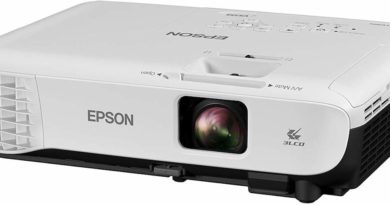A19 Vs. A21
**Articles may contain links that I earn compensation for if clicked and you make a purchase. As an Amazon Associate, I earn from qualifying purchases. These earnings do not actually impact the price of the product or service.
If you’ve ever stopped at the light bulb section in your local hardware store, you may have come across bulbs with sizes like A19 and A21. Bulbs that come with letter code “A” included in their name are mostly designed for residential light fixtures, and the numbers are used to point out their sizes.
But what is the difference between these two sizes, and how do they affect how you choose?
It might not be so dominant, but size plays a significant role when it comes to bulb and socket compatibility. As such, you need to have some prior knowledge when choosing between the two. In this article, we are going to discuss the difference between the A19 vs. A21 bulb along with some applications used by each type.
Before getting into actual comparison, let’s state that both the A19 and A21 household bulbs are generally built for many different purposes and fixtures. They come with a standard base that keeps the bulb secured in light settings such as a table lamp or ceiling fan.
They both look alike and feature a nominal power range of 40 to 60 Watts. The power helps to generate between 450 and 800 lumens. If you want to have a brighter light, then you can consider incandescent bulbs with a nominal power of around 100 Watts. Even so, the A21 bulb is longer than the A19 bulb.
Most manufactures of these products are working to create LED bulbs that can provide as much light as a 100-Watt incandescent bulb. They strive to create energy-efficient bulbs and diminish prevalent heat issues that occur when an LED light bulb creates too much light.
Table of Contents
A19 vs A21 Bulb Comparison
As earlier mentioned, A19 and A21 indicate the size of the bulb. To give an idea, the letter “A” is the standard size of lightbulb used for home purposes. It is a pear-shaped sort of a lightbulb that employs an E (Edison) size base. In simple terms, both products come from the same shape but differ in size.
The A-shaped bulb is one of the oldest lightbulb designs, and it’s still popular among homeowners up to now. Both the A19 and the A21 are very similar in appearance, although the A21 comes with a slightly longer, and it’s large enough to light up most fixtures and occasions. The shape and the medium base allows these bulbs to be screwed into virtually all residential light sockets.
Comparing both types of bulbs means that you’ll have to consider the A19 vs. A21 bulb shape. At a glance, they may seem to have no difference, but a further examination of both bulbs will reveal that there is a slight difference, particularly in the size of the bulb head.
You Might Also Like: Epson V550 Vs. V600
Distribution Degree A19 vs. A21
The extent of light distribution from the bulb also matters and can greatly influence your choice based on a particular room type. If you have a too large room, then not all bulbs will be able to provide sufficient lighting to make it look bright.
The extent of distribution will also help in making your final choice since you’ll need to consider up to what extent the light goes and the necessary degree that will provide the room with sufficient light.
The A19 light bulb doesn’t come with reflectors, which makes it capable of emitting light in a full 360 degrees angle. Meaning you can light up small to medium size rooms evenly. On the other hand, the A21 bulb also features a 360 degrees angle to enhance the distribution of light. Therefore, placing the A21 in a bulb socket or a bulb-holder, you can secure an even delivery of light all over the whole room.
That said, both bulbs can offer a reasonable degree when it comes to the distribution of light. So, whatever bulb you choose, you’re likely to be impressed by the light distribution.
A19 vs. A21 Product Dimensions
The A19 measures around 2.375 inches in diameter and 4.13 inches height, whereas the A21 bulb comes in at larger dimensions, 2.6225 inches wide and 5 inches height. That’s the most obvious difference between these two products. Besides, they are quite different in power.
A bulb’s power is measured in lumens, which basically means the illuminating energy emitted by a bulb when you turn it on. Apparently, an A21bulb will produce more lumens as compared to the A19 bulb. This is because the A21bulb has a larger space for heat dissipation, which is particularly true for LED lights since they are much powerful.
Now that we have discussed the difference between both products, you could be wondering if there’s any similarities between the two. Apart from the shape, both bulbs come with the same type of base that makes them compatible with the socket. The base helps you to use either of these lightbulbs for residential purposes such as table lamps, basement lights, ceiling fan lights, etc.
A19 vs. A21 Bulb Applications
While both models feature the same, one might think that it won’t actually make any difference picking one of the two because you can have them interchangeably. Although that is practically true to some extent, understanding the differences between the A19 vs. A21 can significantly help with heat dissipation and other energy efficiency issues.
The A21 bulb can present a higher lumen level because of the bigger space, and hence it provides better heat dissipation. With this bigger size, manufacturers often tend to introduce stronger lights of about 100W by employing this size.
That said, if you want a powerful bulb, perhaps for your lamp or basement, or even a big living room, then you may want to choose the A21 bulb size for those particular purposes.
Nonetheless, it’s important to know that this kind of power is also associated with price-energy efficiency. Most manufactures have added lumen power in their A21 bulbs, which will often lead to higher energy bills.
Because most of the modern A21 bulbs are packed with power, it’s better to reconsider using them, especially if you don’t need that much lighting, and save yourself some bulks. For that case, the energy-efficient alternative would be the A12 light bulb.
Apart from that, both bulbs are often preferred because they meet the average bulb base as well as the light distribution. In fact, the main and the most noticeable difference is the product size. The A19 comes smaller in width compared to the A21. Therefore if you are looking for a large lighting unit, you may want to pick the A21. But where the size is not an issue, you are bound to be impressed by any of the two.
One more thing that buyers should consider is the need to interchange the two. If you are planning to use a lamp holder to support the bulb, then you should know that you can’t swap the two. Because they both feature the same base, you will not have any issue with the socket.
But for the lamp holder, you might have a problem. The A19 can comfortably fit in the A21 lamp holder, but you can’t do it the other way round since the A19 is smaller than A21, making it easy to fit in the A21 lamp holder. Also, since the A21 features a larger diameter, it’s quite obvious that it won’t fit the A19’s lamp holder. That was just something to consider when choosing between the two.
Below is a quick summary of the pros and cons of both products.
A19- Pros
- Light Instantly
- Environmentally friendly
- Available in different color temperatures
- Can last for 15,000 hours of use
- Not associated with infrared or ultraviolet radiation
Cons
- The color quality may be poor
- Where smart technology is included, the set up might be quite difficult
A21- Pros
- Lights up quickly
- Dimmable
- Less complicated to make
- Bright enough for different purposes
Cons
- It’s not such durable
- It might not light consistently.
Conclusion
After comparing both the A19 vs. A21, we can confidently stick and base our judgment on features and applications, as stated in the review. And as you may already know, the A21 would be a better purchase between the two.
It boasts a larger diameter, making it capable of containing the right amount of energy/heat from the electricity. Aside from that, they both have the same base as well as the degrees of the light distribution. So you are confident that any of the two will grant you enough light.
Additionally, you may want to understand the importance of differentiating these two products. However, that will be useful if you mark the pros and cons of these two bulbs. The difference in size between the A19 and A21 might seem a bit trivial, but it can actually affect the power and the energy consumption of your bulb. That said, if you are really interested in the numbers, then you should take a look and hack back to these small details. These are just little things, but in the long run, they play a great role if you want to understand the lighting system.


